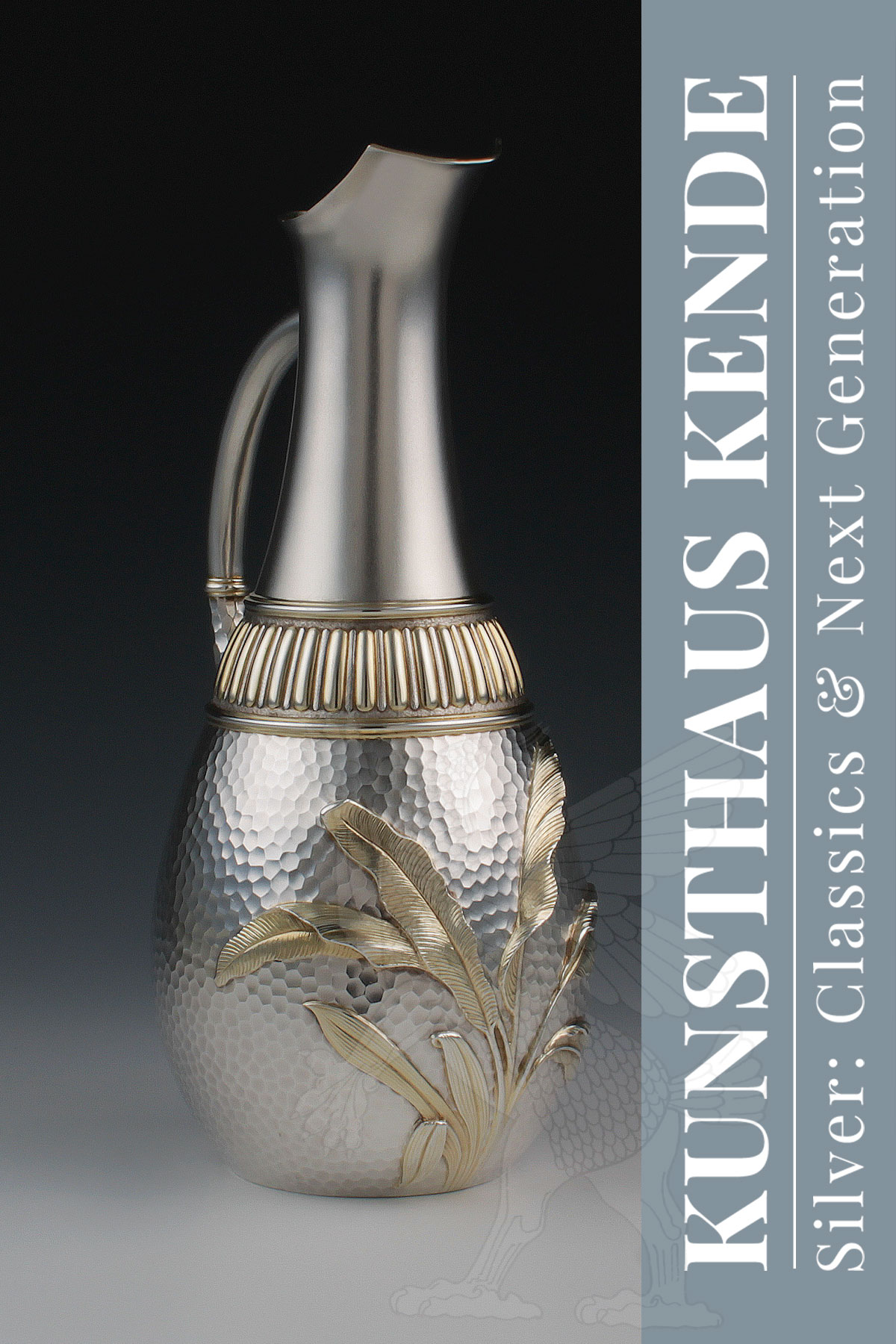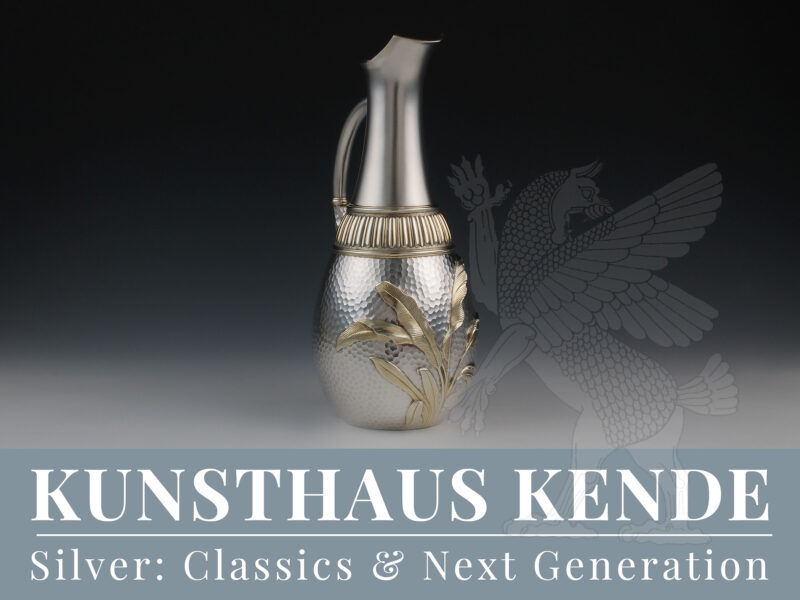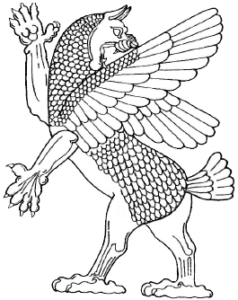Item number: 60162
An Art Nouveau silver pitcher,
Copenhagen 1884 by Vilhelm Christésen
The lower third part of the body showing a hammered surface, with a plastically protruding plant with gilded leaves and stems to the front. The bulging body merging over gilt vertical ribs into the frosted neck with a slightly curved spout. The lower third of the handle is decorated with a hammered surface in analogy to the body, separated from the frosted top by a thin profile.
An elegant Danish Art Nouveau carafe in very good condition. The bottom of the spout shows minor irregularities due to the manufacturing process.
27.8 cm / 10.94“ height, 12.1 cm / 4.76″ diameter; 569.8 g / 18.31 oz
The Copenhagen silver manufacturer Vilhelm Christésen
With his full name Frederik Christian Vilhelm Christésen, he was the first Danish industrial manufacturer of silverware. Born in Copenhagen in 1822 as a son of a landowner, he moved with his mother to Slagelse after his parents divorced, where he was apprenticed to the silversmith Fredrik Rasmussen in 1838. After passing his journeyman’s examination in 1843, he spent several years as a journeyman in Bremen (Germany) and elsewhere. In 1852, he acquired an old rolling press and used it to found the first Danish silverware factory in Slagelse. A second press followed in 1854. In 1856 – against the protest of the silversmith´s guild – he was granted the privilege of running a silverware factory in Copenhagen that specialised in the mechanical stamping of gold and silverware. He failed in his application to become a master craftsman in the hostile guild and henceforth contented himself with trading as a silverware manufacturer. In 1857, the factory was expanded to include a drop forge for the production of handles and legs for coffee and teapots. In 1861 he was awarded the medal Ingenio et Art and the Swedish medal litteris et artibus. His skilfully managed company was to have a far-reaching influence on the development of the profession in Denmark: from the old noble but increasingly unprofitable craftsmanship to factory production. Nevertheless, he never completely abandoned the artisan traditions and the factory also produced customised crafts. Christésen is the first manufacturer in Denmark to combine designers with his company (for example, the architects Vilhelm Dahlerup and Heinrich Hansen, the sculptor Carl Peters and artists such as Nilaus Fristrup and Henrik Olrik). This concept of coexistence between designers and the manufacturing factory would later be adopted by Georg Jensen and help it to achieve similar success. Although the skilled silversmiths produced outstanding largeworks, these only made up a small part of Christésen’s production. In 1862, the silverware factory exhibited its best work at the London World’s Fair and in 1867 at the Paris World’s Fair. In 1868, he was also the first manufacturer to introduce steam power to his factory. In 1888, he presented his production facility as a ‘glass workshop’ at the Great Nordic Exhibition in Copenhagen. Similar to the german manufacturer Bruckmann & Söhne, Christésen’s company supplied silversmith shops throughout the country right from the start. In 1865, however, he opened his own shop at Amaliegade 11 and Østergade 8 in Copenhagen. After Vilhelm Christésen’s death in 1899, the company was taken over by the silverware manufacturer August Thomsen. Vilhelm Christésen’s silverware factory became a model for a number of later silverware manufacturers, in particular Peter Hertz’s sons Sally and Jacob Hertz, who founded the S. and J. Hertz Sølvvarefabrik in Copenhagen in 1875.





